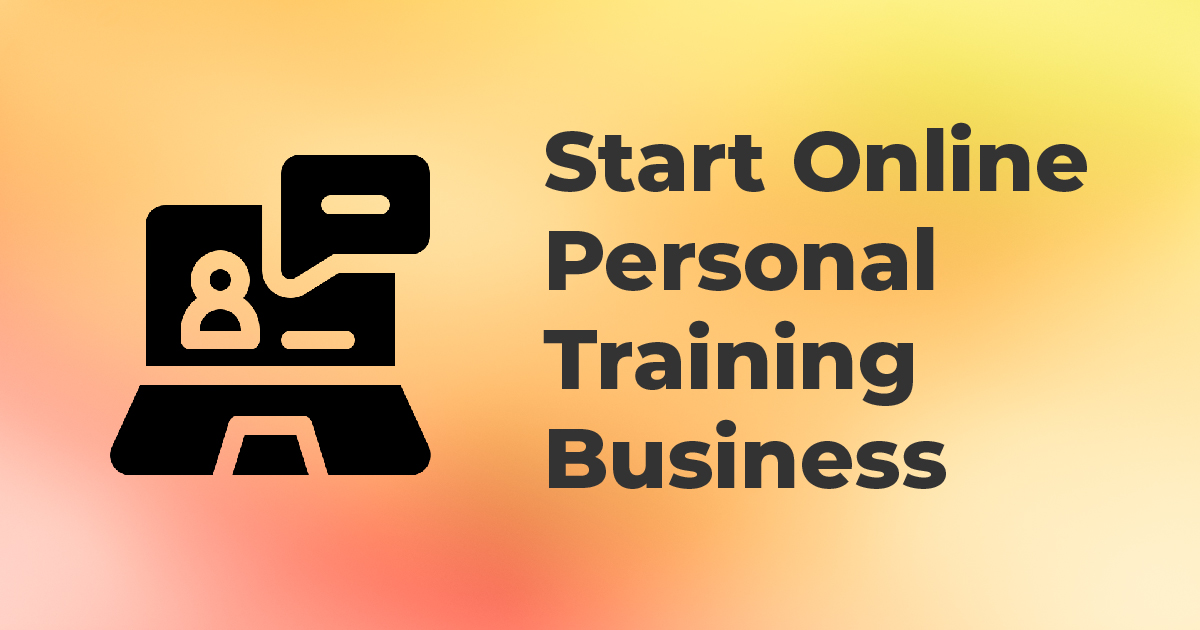
If you’re a personal trainer that wants to build a highly profitable fitness business in 2025, then you’ve got to step outside the box of traditional in-person training.
Sure, working with clients one-on-one is really valuable and it’s a solid way to operate. However, time is a limited resource, and the in-person training model doesn’t always help you make the most of it!
Grow Your Fitness Brand with Trainerfu – Start Now!
Build your brand and attract more clients with marketing tools that work. Discover how Trainerfu can help you promote your business effortlessly.
Try it freeTo be able to serve more clients, earn more money, and still enjoy the flexibility and freedom that owning your business can bring you, building an online personal training business is key.
But if you’ve never worked with clients online, it can be hard to know where to start. TrainerFu is dedicated to helping personal trainers maximize online training options and bring their clients great results. So we want to share our best tips for building a successful online personal training business from scartch.
Here’s what inside this guide:
- Chapter 1: Why offer online personal training?
- Chapter 2: How to price and package online personal training
- Chapter 3: How to train personal training clients online
- Chapter 4: How to market your online personal training business
Why offer online personal training?
Traditional personal training is a great way to connect with clients and offer them in-person support. This old school model works, and there’s plenty of good reasons to continue offering traditional personal training.
However…
If you’re reading this, it’s probably because you are ready to scale past what is possible with traditional personal training. Online personal training is how you do this.
Online personal training involves delivering your services to clients remotely. This is not the same as virtual personal training where you might meet with a client over Zoom or Skype. With online personal training all your training resources are shared with a client for them to access on their own schedule. You can still meet with clients (virtually or in-person) but these sessions are not as frequent.

Online training options can stand alone or work as an addition to in-person sessions. We’ll talk more about this and how to package online training shortly. But first, we want you to know that however you decide to include it, online personal training can be really profitable and can help you expand your services to a much wider audience.
Online personal training helps you:
1. Attract new clients that are not a great fit for traditional personal training.
There is an extremely profitable market out there that the traditional personal training model just isn’t reaching. This market consists of people that want customized and effective personal training but can’t afford traditional training or fit it into their busy schedules.
Think about this: What percentage of people can afford to spend $700 per month on fitness?
The affluent few.
How about people that can spend more than $250 per month on fitness? Now, that’s a little more accessible right? There’s a huge gap in the market made up of people that can’t afford 2 to 3 in-person sessions a week, but that want more than their standard gym membership has to offer.

Additionally, there are potential clients out there that want the benefits of personal training but prefer to work out from home, are too busy for traditional training, travel a lot, and/or live remotely. All of these people would be better served by the affordability and flexibility of online personal training options.
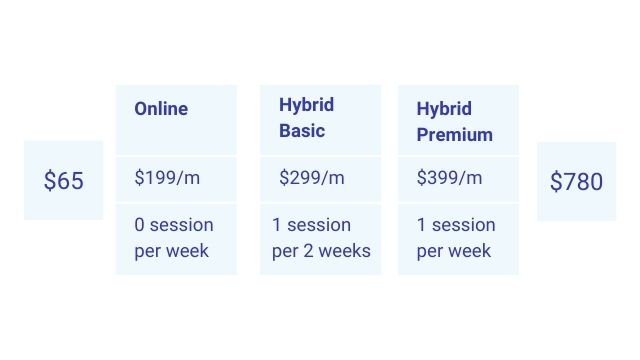
2. Break your income ceiling and scale your personal training business.
As a personal trainer, you are your business. You can certainly scale, but your growth is limited by your capacity. There’s only so many training sessions you can squeeze into one day, on top of all the other administrative duties and responsibilities you’re dealing with.
With in-person training there is a ceiling to how much you can earn.
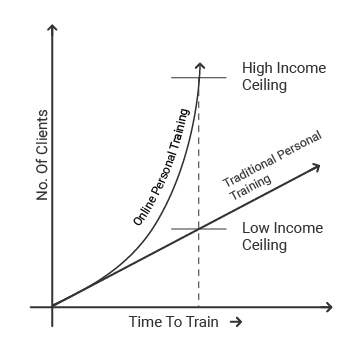
So if you want to break your income ceiling, online personal training can help you step out of the traditional model and make better use of your time. Online personal training allows you to offer the same resources to multiple clients and take on many more clients at once.
3. Increase retention and make more money per client.
Online personal training offers an opportunity for better retention over the traditional personal training model.
Think about it. Life happens. People lose jobs, move, start a family. Traditional personal training can be really hard for those clients to keep up through changes in their life or schedule.
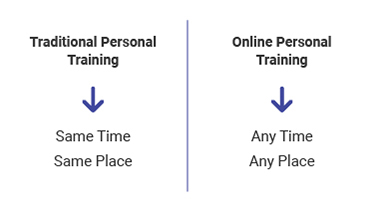
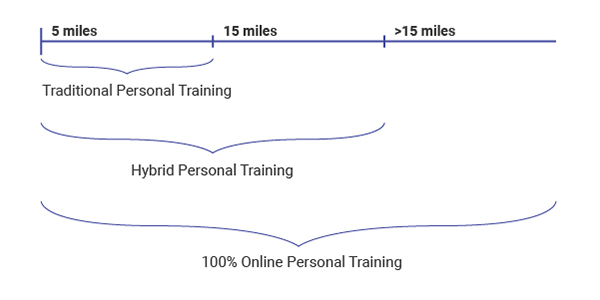
However, online personal training allows you to offer various options that meet the needs of your clients during their different phases of life. With online personal training you can continue working with a longtime client that just moved cities. You can help a new mom workout when it fits her schedule without a need for weekly visits to the gym.
By creating a product catalog that gives your existing clients options, you can make more money per client no matter where life takes them. Offer your clients this convenience and watch retention and profits soar.
How to price and package online personal training
When it comes to packaging and pricing your online personal training, there are several proven models that you can follow to make your business profitable. Let’s go over these models and some tips for pricing each of them.

100% online training
As the name suggests, this is personal training that is delivered fully online. We will go over the essential components of an online training program in a bit. But with online personal training, you have a lot of control over what to include and can customize packages for your clients. You can also decide what you want to make available as add-ons for an additional cost.
To price 100% online personal training:
- Decide what to include in your service.
- Calculate how much time it would take to deliver the full service for a month. Don’t forget to account for admin and support time.
- Multiply the time with your preferred hourly rate, and you now have a base monthly price to offer this service.
-
Choose any of the two pricing models below:
- Monthly subscription pricing.
-
12-weeks (8 or 16 weeks) upfront and then month to month.
We recommend the month-to-month subscription model since it is easier for your clients to buy into.
- Select what add-ons to include and decide on flat rate pricing for each.
Hybrid training

For clients that might need a little more support, hybrid training is a great option. Though you will still deliver most of your program online, you will also have weekly or biweekly check-ins with clients where you can monitor their progress, answer any questions they might have, demonstrate new exercises, etc. Your clients will still complete their workouts on their own time and enjoy the added flexibility and customization of online personal training.
The pricing here is also pretty straightforward.
- List everything you want to include in your service.
- We recommend that you create two different packages: one with a weekly in-person session and another one with a biweekly session.
- Calculate how much time it would take you per month to deliver your service to an individual client.
- Multiply that by your hourly rate to get your final price.
- Offer additional in-person sessions at your normal in-person session rates.
- Choose the ideal pricing model.
Group fitness training
One really lucrative way to package online training is by creating a group fitness challenge or training program. This allows you to serve a lot of clients at once, making the most of your time!
To make sure that the online group challenge works for all participants, it is important that all participants more or less have the same start point and a common end goal. For example, you can bundle working moms who are looking to shed a few pounds in one training group.
Pricing this online personal training package is slightly different from fully online and hybrid personal training. This package would be a cheaper option for clients, since you are not offering personalized one-on-one training.
As with all of your packages, think about the amount of time it will take you to create and what resources you will be including. You can consider charging a flat rate for an online group training program, for example, $799 for a 12-week challenge.
Template programs
A template program is exactly what it sounds like – a program without any personalization. Your clients can easily download the program and get started whenever they want.
It shouldn’t take up much of your time since you don’t have in-person interactions with the clients, and you just need to update the program once in a while.
Template programs demand the least interaction between personal trainers and their clients. Therefore, they are generally low-priced, ranging from $10- $30 per month. You can also choose to set a one-time charge for the program, especially if you don’t plan on updating it often.
Template programs aren’t necessarily the most profitable of the online personal training packages, but when offered in addition to your other services they can provide a great source of passive income.
Enhanced in-person training
If you’re taking the time to build out online personal training resources, you might as well use them for your in-person clients as well. Since they are already paying a premium fee for your in-person services, you can include these benefits as add-ons and charge a little extra.
Your clients will access the add-ons through the method or app of your choosing and get the same benefits as your online training clients. They can track their progress, interact with others, and get more support through the online platform.
Think about what you are charging for your online components and add-ons and use that as a benchmark for pricing enhanced in-person training. Incorporating this model is an easy way to increase your income.
How to train personal training clients online
You’ve probably got your in-person training down pat. But when it comes to training clients online, there are a few different considerations that can improve their experience and help them meet their goals.
Here are the seven things that all good online personal training programs will include along with some recommendations for how to incorporate them.
1. Workout training
If you’re using the traditional in-person training model, delivering the workout to your clients is pretty straightforward. They only need to show up for the sessions, and you take it from there. The game is played a little differently when you’re training fitness clients online.
So, how do you translate your traditional personal training experience to your online clients?
Your clients will be working out on their own for most of the part. So, the online workout plan should contain as much information as they need. Here are some of the components to include in an online training package:
- Exercise videos- You don’t need to film all the videos. Instead, find suitable ones on YouTube and include them in the program.
- Exercise instructions- clear directions that your clients can follow along with at home.
- Form cues and any other notes

Many trainers with online clients only check the workout logs during the check-in sessions. Don’t fall into this trap as it may be too late and your client may have missed an entire week or two worth of work. Make sure to ask your clients to log their workouts and send them to you after every session. This will hold them accountable and help you bring them better results.
![]()
Giving feedback goes a long way into boosting your client’s motivation to stick to their workout routines. When training your personal training clients online, you shouldn’t skip this step simply because you aren’t physically present with them.

2. Check-in calls
Be sure to include regular check-in calls with your clients in the online training program. These calls should be on a per-need basis and can be anything between 30 minutes and one hour. Often, most personal trainers schedule weekly or bi-weekly check-in calls with their clients.

Choose a platform that’s convenient for both you and your client. You could use either Zoom, Skype, or Facetime for these sessions.
Generally, you won’t be using these calls for live workout sessions. Instead, you’ll use these calls to:
- Go over your client’s progress
- Demonstrate new exercise forms
- Assess the client’s progress
- Answer any questions
- Give encouragement
Some of your beginner clients may need a bit more hand holding. In that case, you can sell them additional check-in calls as an add-on to their online training package.
3. Assessments
Assessing your online clients is one of the trickier parts of online personal training.
For clients that opt for a hybrid training package, we recommend doing all assessments during your in-person time together. Clients who have opted for online only packages will have to perform the assessments on their own.
![]()
To help your clients keep a track of their progress, recommend that they track some of the following metrics regularly:
- Weight- This is an easy one. Most people who are fitness conscious usually have a scale at home and can log their weight on a consistent schedule.
- Body fat percentage- There are several machines and scales available on e-commerce sites like Amazon that do a decent job of accurately measuring the body fat percentage.While these machines might not be as accurate as the ones that you might use in your training centers (such as DEXA), the goal of this online assessment is to set a baseline, so that your clients have a number to improve on.
- Progress photos- This is a super easy one for your clients to do, and an important one for you to track their progress. For any client, _seeing _proof that they lost 10 pounds is more impactful and motivating than reading numbers on a scale. And of course, we don’t need to tell you what a marketing goldmine these progress photos can be.
- Tape Measurements- Ok, this may sound like a medieval way to track progress, but tape measurements are still super effective. Make sure to teach clients how to take proper measurements and have them log them consistently.
- Old school push up and plank assessments- Simply ask your client to track how many push-ups they can do every day or how long they can hold a plank. This assessment can be a great way for clients to see their own progress.
- Endurance tests- To perform this assessment, ask your clients to run 400 meters (or 1 mile) and log the time it took to complete this run. You may ask them to repeat this assessment monthly and measure how their lap timings fluctuate with time.
Keep in mind that the goal is NOT to do all the assessments that we have listed. Rather, consider your client’s goals and think about which will work best for them. The right assessments will help them track their progress and act as a motivator for them.
4. Nutrition coaching
Traditional personal training mainly focuses on the workouts, but training clients online gives you leeway to offer more services. The most successful online personal trainers include a bit of nutrition coaching in their online training programs. So, why not include it as well?
You can easily deliver nutrition coaching online and in the process, add so much more value to your clients. The easiest way to do this would be to ask your clients to track their meals using an app like MyFitnessPal and then add you as a friend in the app, so you can hold them accountable.
If you’re using an online training app like TrainerFu, ask your clients to connect the app to MyFitnessPal. The beauty of this integration is that you stay up to date with all your clients’ meals throughout the day. Every meal that your client logs will automatically show up on your feed. You will be able to see exactly what they ate, how much they ate, how many calories they consumed and what the macro breakdown looks like – all in one place.
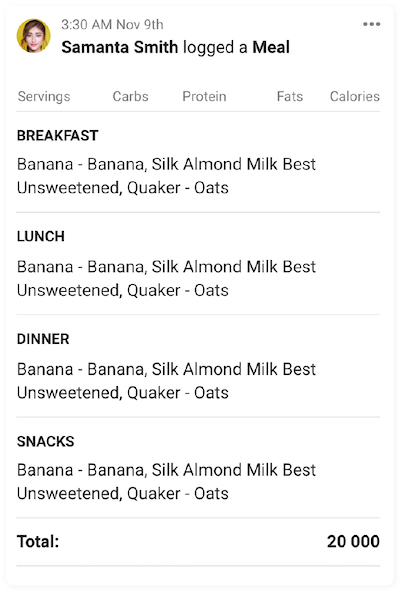
Offering nutrition coaching in addition to workouts can give you a competitive edge as a personal trainer, help you retain your clients longer, and bring them better results!
5. Habit coaching
Habit coaching is another addition that can supplement your online personal training. In traditional personal training, the trainers hardly focus on habits, because it would simply be too much work for the trainer and not worth their time.
With online personal training you can be better equipped to help your clients still to their habits by offering habit coaching. To do this, you will want to constantly check in with your clients to pinpoint their bad habits and help them stick to healthier new ones. And since it can take up to two months to form a new habit, we recommend checking in with clients for weeks or even months.

This sounds like a lot of work when your client is only paying you per session. But, with online personal training, you can easily automate habit coaching using training software like TrainerFu. This integration lets you deliver the habit coaching to your clients in less than a minute.
6. Community
Building a robust community of your online clients is always a good idea. It makes the entire experience fun for everyone and also offers support and accountability for the clients.
The most popular way to go about this is by using Facebook groups for all your clients. You can ask them to keep the group engaged by posting their workout videos, progress photos, and any other helpful content.

Having a close knit community is an important part of online personal training. That is why we made the community feature available on the TrainerFu app. Once they have logged their workout hours, your clients can easily share it on the news feed. As the personal trainer, you can also post fitness content and videos to get the community buzzing.
7. Use an online personal training platform
It’s pretty obvious that training fitness clients online entails more than simply sending them workouts. Your success as an online personal trainer will depend largely on the system you use to train your clients, and scale your business.
The six parts of online training we mentioned above can all be integrated and automated within the TrainerFu app.
Provide your clients with support and engage with them regularly. Hold them accountable by setting up an incentives program and encouraging clients to send you their workout logs immediately. Create custom assessments and set up periodic reminders to get your clients to perform them. You and your clients can track those assessments right from the app.
You can even integrate your add-ons like nutrition coaching and habit tracking right within the app, making it simple to build out robust online training programs. Using an online personal training platform/software makes online personal training easier for both you and your clients.
How to market your online personal training business
You may have relied on referrals and word of mouth marketing to keep your personal training business afloat. And there’s nothing wrong with that! It’s an easy and powerful way to grow a business.
However, if you’re expanding into the online personal training market and looking to scale quickly, then you’ll want to invest time and resources into creating an online marketing strategy. Remember, with online personal training you can train people outside your local area! But first, you have to attract them, and convince them to work with you.
We have an in-depth guide that you can check out here → Personal Trainer Marketing
But let’s touch on the basic steps to marketing your personal training business online.
1. Find the right niche to maximize ROI on your marketing efforts.
The first and most important step in marketing (both on and offline) is to determine who your marketing efforts are targeting. This means figuring out the kind of clients you want to work with and tailoring your marketing to speak to them.
To do this, first you will want to figure out your niche. Determining a niche makes it much easier to attract and serve the right clients and is crucial for growing your fitness business.
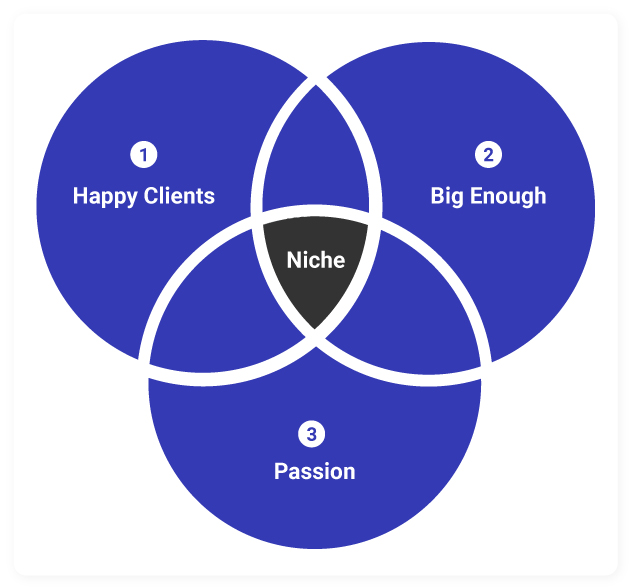
You may already have a niche in mind. If not, it can be helpful to think about your happiest clients – the ones you bring the best results to. What do they have in common? How do you help them?
As you narrow your niche down, make sure to keep the market large enough to serve. For example, targeting “people that want to get in shape” might be a bit too broad. Whereas, “seniors with rotator cuff injuries” would be way too narrow.
You’ll also want to think about who you are most qualified to serve and what you are passionate about. This part is vital because it will help you excel in your business and help you enjoy the work that you do.
Once you know your niche, you will be more equipped to specify your ideal client. Your ideal client is the person within your niche that you will tailor all your marketing content to. When thinking about your ideal client, the more detailed you get, the better. List out their values, likes, dislikes, challenges, hobbies, etc. All your marketing will be targeted toward this ideal client within your most profitable niche.
2. Find your uniqueness factor to stand out from the competition.
The internet is a crowded place! It can be a challenge to cut through the noise and stand out.
So to successfully market your business, you need to tell your prospects why you are a better choice than your competitors.
You need to figure out what you do differently that brings provable results and share those results in your marketing , again and again!
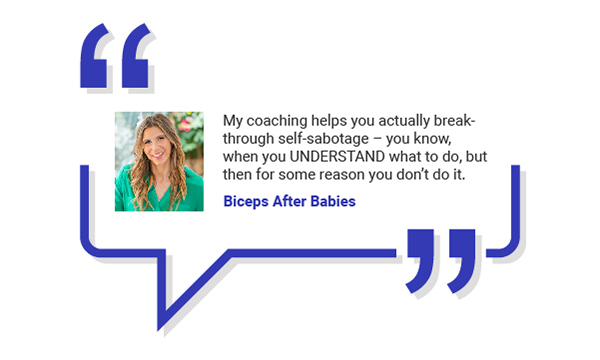
So how to find your uniqueness factor?
- Find your real competitors. These aren’t necessarily personal trainers that are really busy. You’re looking for personal trainers that are going after the same ideal clients as you.
- Think about how you do things differently than your competitors. Remember, you will want to focus on what you do well, not what you think someone else does poorly.
- Consider how your way of doing things lets you provide different benefits to your clients. Let some of your happiest existing clients inspire you.
3. Attract leads and open an ongoing communication channel.
Now we’re getting to the juicy part of marketing your fitness business. Marketing is all about communicating with potential clients and building relationships with them. These relationships are ultimately what will make strangers feel like they know you and trust you enough to work with you.
You want to move your leads from point A (awareness of who you are) to point B (convinced you know your stuff and ready to buy!).
Now there are many ways you can do this, but they all involve drawing prospects in and opening communication channels with them. Some of the most popular methods are through social media and email. These two marketing channels can stand alone, but work best when used together.
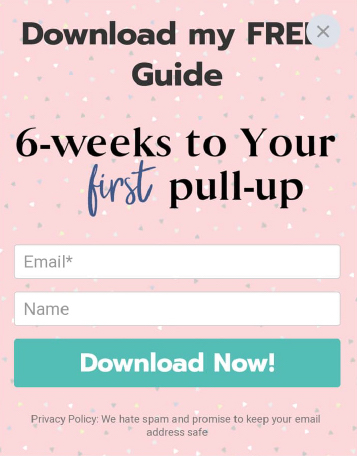
Make it a priority to build a community on at least one social media platform, like Instagram, and start building an email list full of ideal clients. Use social media to build your brand and engage with followers daily. Encourage followers to join your email list by offering them something in return (like a free workout or meal plan).
4. Nurture leads to establish authority, build trust, and remove any objections.
Once you have established a way to communicate with clients, continue to nurture those relationships with the right content. In your online content you will want to:
-
Showcase your identity: Build the “like” factor by highlighting parts of your personality that aren’t all fitness based. This helps your ideal client relate to you and helps you gain their trust.
![Personal Trainer Marketing Content Idea 1]()
-
Deliver value with tips and how-tos: Show your audience that you know your stuff! Provide value on your communication channels and give them a reason to come back for more.
![Pillar Content Formula]()
-
Disprove client objections: Acknowledge the reasons why people might not be ready to work with you and tackle these objections head on.
![Fitness Social Media Content Idea 4]()
- Bust common fitness myths: Prove your expertise by busting common fitness myths and shifting your potential client’s mindset.
-
Share success stories and social proof: Your leads want to know what type of results are possible for them. Show them the transformations you have brought other clients through photos, videos, and testimonials.
![Fitness Social Media Content Idea 2]()
5. Convert leads into paying clients with a killer offer.
Last but not least, the whole point of all this marketing is to convert leads into paying customers! Do this by honing down on your amazing offer (use our pricing and packaging tips to help) and start selling this offer online.
You’ve built a relationship with leads and they are primed to buy. Ask for sales in social media posts and in your emails. Tell them what to do next to work with you!.
Start training clients online today
As you can see, it takes time, effort, and stepping outside of your comfort zone to make online personal training work for your business. However, it’s an investment of resources that will definitely pay off.
There are many different ways to incorporate online personal training, and offering a few different packages will help you reach more clients and increase your profits.
Plan to focus on selling online personal training to your ideal clients and using several different communication methods to reach them. Make sure to build robust programs that meet the needs of your target niche.
All of this can be made much easier with an online personal trainer software like TrainerFu. Follow this link to try it for free today.
Frequently Asked Questions
1. Why should personal trainers consider offering online training?
Online training allows trainers to scale their business, serve a larger audience, and offer flexible, affordable options that cater to clients who can’t commit to traditional in-person sessions.
2. What’s the difference between online and virtual personal training?
Online training provides resources for clients to follow on their own schedule, while virtual training involves live sessions via platforms like Zoom or Skype.
3. How can personal trainers price their online services?
Trainers can choose subscription models or set fixed-term packages. Pricing should reflect service components, time spent, and added-value features like consultations or feedback sessions.
4. What are hybrid personal training programs?
Hybrid programs combine online resources with occasional in-person or live check-ins, offering flexibility with personalized support.
5. What tools are essential for starting an online personal training business?
Platforms like TrainerFu, video conferencing tools, fitness tracking apps, and email marketing software are essential for managing client interactions and programs.



